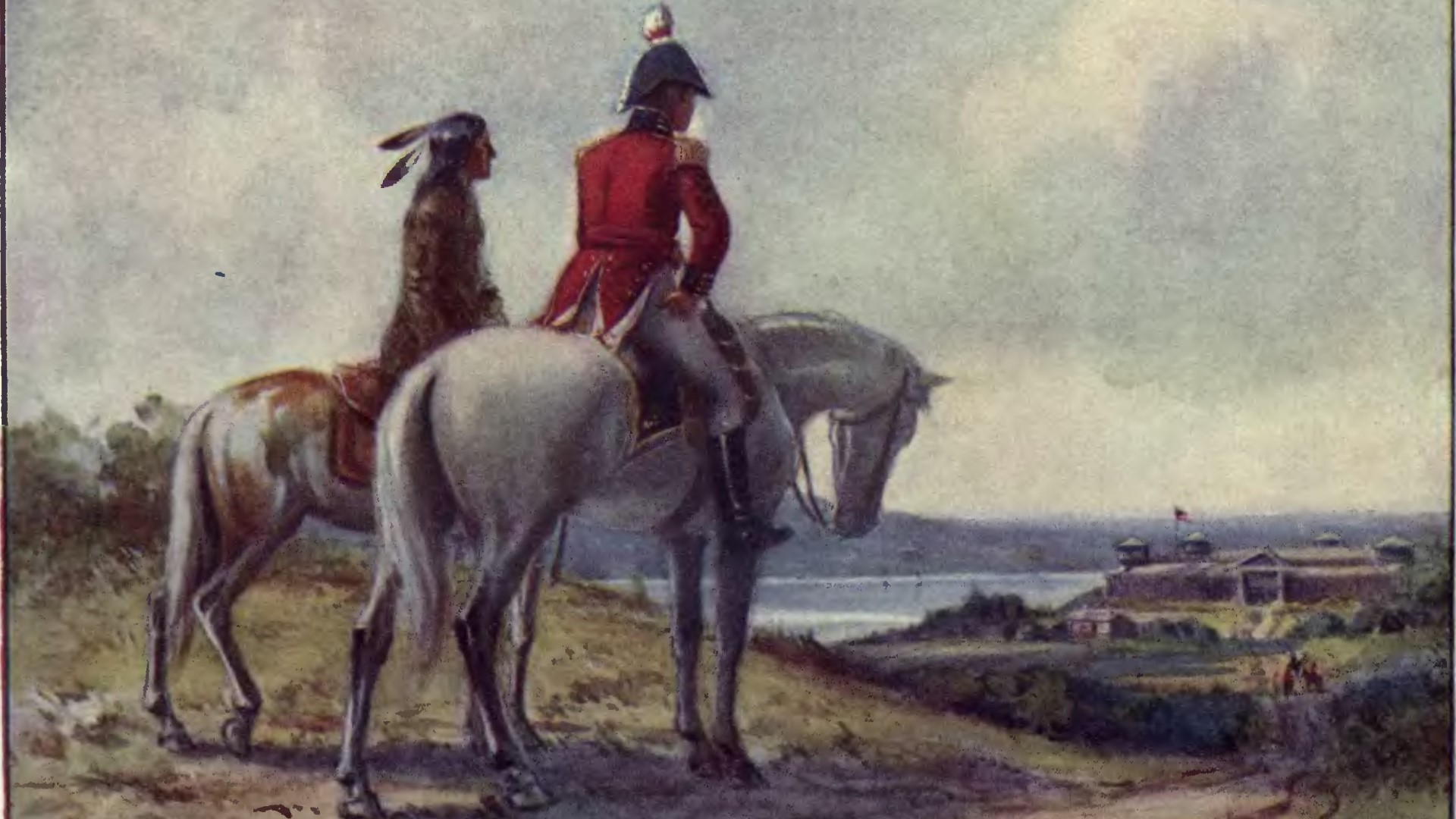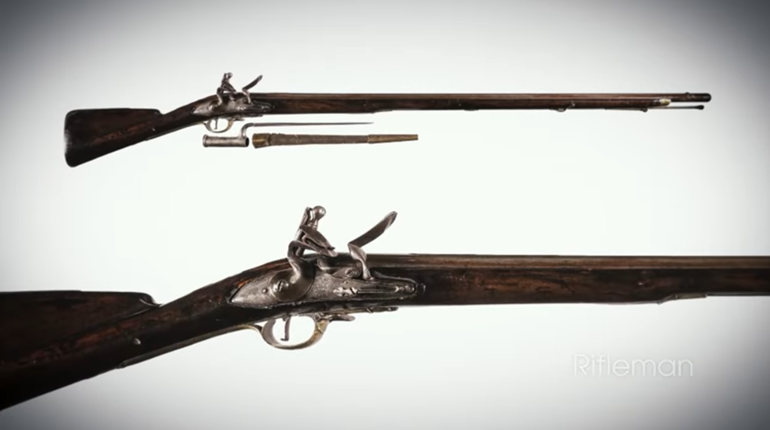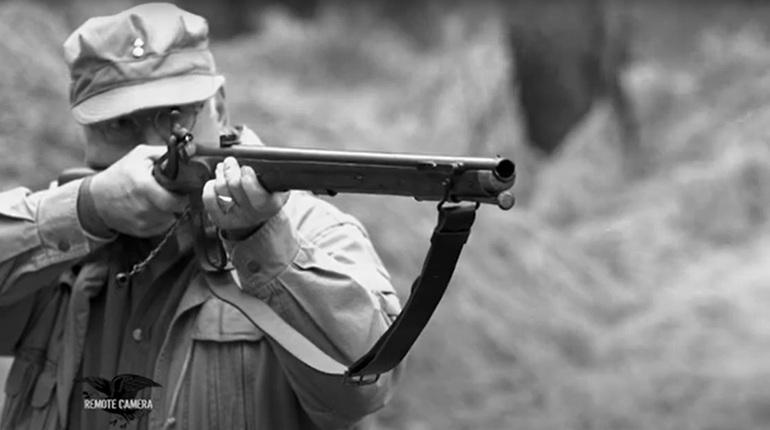
Warriors have experienced premonitions about their imminent death in upcoming battles for as long as wars have been fought. It’s nothing new. Thankfully, that feared, ominous event usually does not happen. Most times, it’s just a normal case of the nervous jitters preceding a life-and-death struggle. But two hardened, veteran warriors—in the same fight, on opposite sides of the battleline—accurately predicted their passing. One was the well-known native American Shawnee leader Tecumseh, and the other was the lesser-known frontiersman Colonel William Whitley.
The Battle of the Thames (pronounced "Tems," and not to be confused with the river in Great Britain) took place on October 5, 1813, in southern Canada just north of western Lake Erie during the War of 1812. Pitted against one another were American infantry and cavalry, led by Major General William Henry Harrison, versus British troops and their Indian allies, commanded by Major General Henry Proctor and Tecumseh.
The greatest leader the Shawnees ever produced was the incomparable Tecumseh. Born in the Ohio country circa 1768, Tecumseh’s father, Pucksinwah, suspected his son was destined to lead from birth. Legend has it that on the night Tecumseh was born, Pucksinwah looked into the cloudless sky and saw a huge, greenish-white meteor streaking across the heavens from north to south. Awed by the great natural wonder, Pucksinwah named his son Tecumseh—The Panther Passing Across.
Tecumseh grew to manhood during a time of great chaos on the American frontier, the period when Europeans were attempting to wrest control of the Ohio River Valley from native tribes. In an attempt to stem that tide, Tecumseh spent years building an Indian confederacy of various tribes—not just Shawnees—stretching from the Great Lakes to the Deep South. Tecumseh told the chiefs when visiting those tribes that one day he would “stomp his foot on the ground,” giving them an unmistakable sign or signal. It was then that those tribes’ warriors must immediately come to his aid and help Tecumseh and the Shawnees drive the Europeans back east over the Appalachian Mountains into the sea. That highly anticipated sign was the massive New Madrid earthquake of 1811, centered near what is today the state of Missouri.
Colonel William Whitley was born in Virginia in 1749, the oldest son of Scots-Irish immigrants from northern Ireland. He and his wife, Esther, moved west over the Appalachians in 1775 to the wilderness in search of land, eventually settling near what is today Crab Orchard, Kentucky. There they built the first brick house in Kentucky, filled it with a large family, and established an estate called Sportsman Hill, located along the famous Wilderness Road. The path brought pioneers from the Atlantic seaboard through the Cumberland Gap to settle the interior of the Bluegrass State.
Whitley became a self-appointed protector of those families journeying through the region’s wilderness. If Indians attacked travelers, Whitley was the first to hear about it and the first to respond, quickly gathering a group of other frontiersmen and giving chase. They would track the Indians and attack in return, rescuing captives if they could, burying the dead if they were too late.
The author Robert Kincaid, in his 1947 book Wilderness Road, described Whitley as follows.
“He would buckle on his pistols, take down his long rifle, mount his favorite horse and dash off to the trouble spot, bellowing for his men to follow him. The steel-eyed, long-nosed Irishman in his bedappled red brick mansion at the edge of the wilderness became a terror to the savages who menaced the immigrants streaming into Kentucky over the Wilderness Road.”
But after many years of this cat-and-mouse game, Whitley grew increasingly frustrated and vowed to do something to even the odds. Taking matters into his own hands—and without the blessing of the federal government—Whitley led more than 500 mounted Kentucky militiamen against the Indian towns of Nickajack and Running Water, hidden in the mountains south of the Tennessee River. Both villages were taken by surprise and burned, with a total of 52 warriors killed, 19 women and children captured. The militia suffered only one man killed and a few wounded. The Indians got the message: Raids along the Wilderness Road soon stopped.
If there was one thing William Whitley despised more than marauding Indians, it was the British. So it was that at his advanced age of 64, the old warrior enlisted with the American army as a private during the War of 1812 and was assigned to a regiment commanded by Colonel Richard M. Johnson. Throughout his life, Whitley had commented to his friends and family that he would like to die in defense of his country. It had almost happened once, a bullet passing so close to Whitley’s head that it clipped off the tip of his long nose. On the night prior to the Battle of the Thames, Whitley confided to a fellow soldier and friend that he believed he would be killed the next day. He then made a strange request: If he was killed, he would like his scalp taken and returned to his wife at Sportsman Hill.
On that same night, Tecumseh gathered his most trusted warriors around his campfire and made a similar prediction. “My children,” he said, “hear me well. Tomorrow we go into our final battle with the Americans. In this battle I will be killed.” The warriors sat stunned at his words. None wanted to believe Tecumseh, but none could recall a time when his prophecies had not come true. He also gave away his weapons, one by one, to his closest friends, retaining only his warclub.
In his 1967 book titled The Frontiersmen, author Allan Eckert describes what happened next. “He [Tecumseh] then began to remove every sign of rank which he wore: medals, bracelets, necklaces, insignia, the two-feathered headband. They [his warriors] watched him in silence as each item was removed until, finally, he stood before them in simple tanned buckskins—leggings, frock shirt and moccasins.”
The Battle of the Thames lasted less than an hour. Colonel Johnson and his men, including Whitley, were given the unenviable assignment of drawing first fire from the Indians, who were concealed in a wooded swamp. The plan was for the remaining American soldiers to then rush in after the Indians’ muzzleloading rifles were empty. The shooting from the Indians proved so intense that, after the battle, Johnson and his men became known as the “Forlorn Hope.” Johnson was severely wounded, the mare he was riding crumpling to her knees, hit with no less than 15 rifle balls. Whitley was killed and 18 other American soldiers were either killed or wounded, as well, during the initial charge.
Tecumseh was also killed. When word quickly spread along the Indian battleline that their beloved leader was dead, the remaining warriors lost heart and melted away into the swamp. As a result of the battle, the Indian confederation that Tecumseh had taken years to build with other tribes fell apart.
Following the battle, General Harrison wanted to know if Tecumseh was indeed one of the many dead warriors scattered about on the battlefield, but no one seemed to know for sure what Tecumseh looked like. An older frontiersman was summoned, someone who had been accompanying the army as an advisor: Simon Kenton. He had known and fought against Tecumseh for decades and had come to highly respect him as a wise, worthy adversary. If anyone could identify Tecumseh, it was Kenton.
He moved slowly from body to body, examining each war-painted face closely, until he came to a warrior dressed in simple tanned buckskins, a warclub clutched tightly in one hand. Simon looked at the face for only a few seconds before quickly moving on to a nearby Indian dressed in full regalia. He then intentionally misidentified that Indian—Roundhead, a Wyandot chief—as Tecumseh. He did so because he knew what would happen next.
As soon as he falsely confirmed that Roundhead was Tecumseh, some of the soldiers had their knives out and were stripping the body of all its clothing and carving away body parts for souvenirs. As Simon Kenton left the battlefield that day, he was heard to murmur concerning those few soldiers, “There have been cowards here.”







































